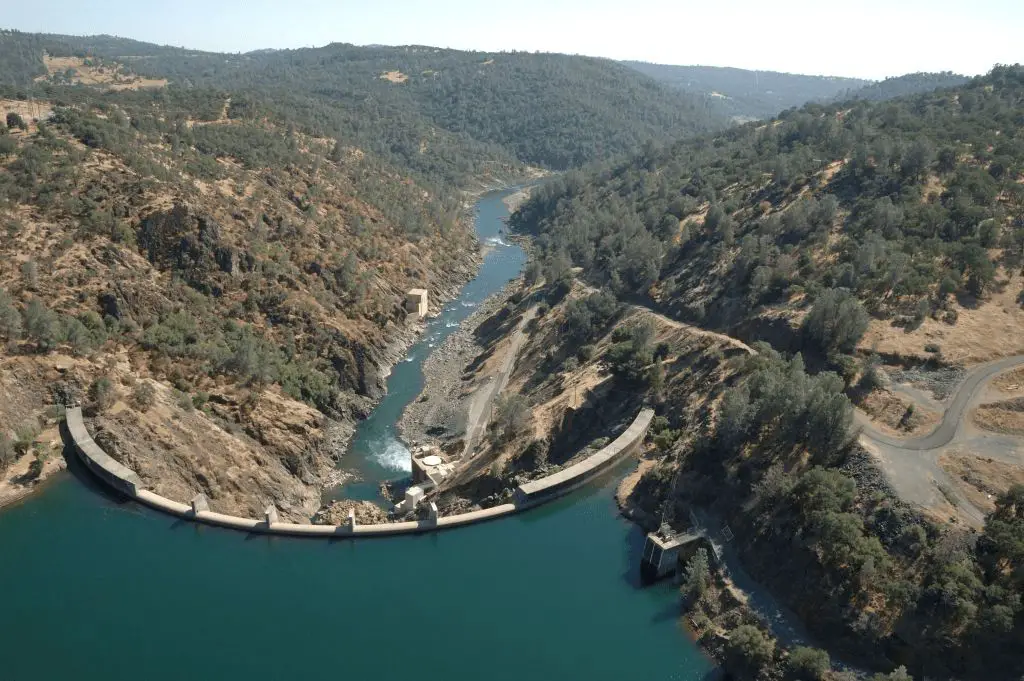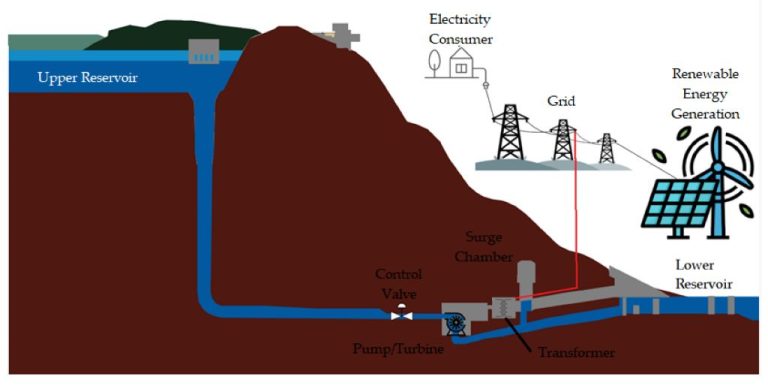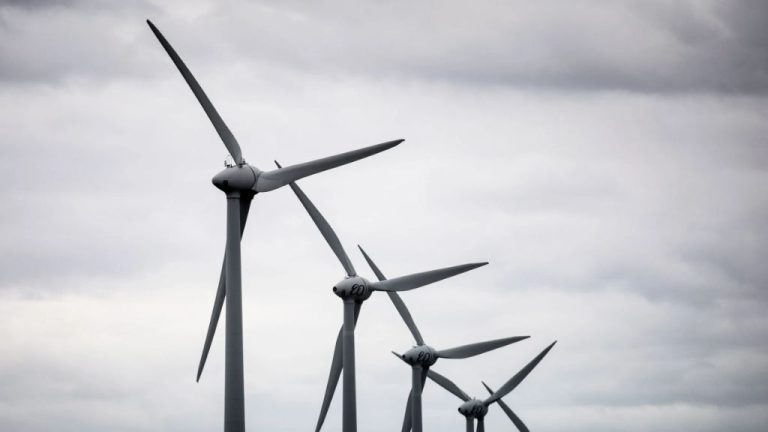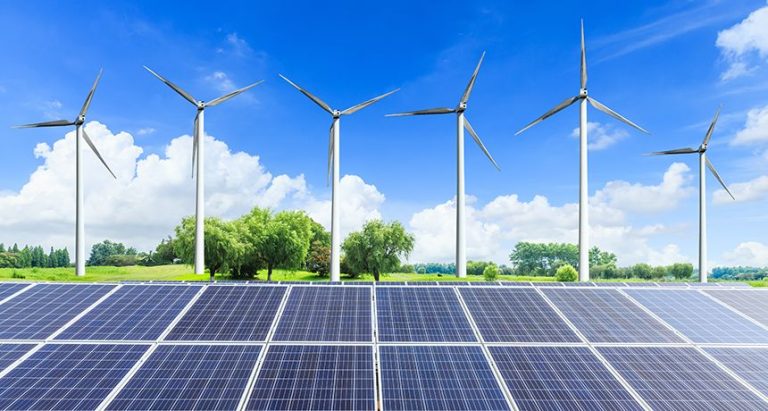What Is The Clean Energy Future Act?
The Hydropower Clean Energy Future Act (H.R. 4045) is a bill introduced to the United States House of Representatives in July 2022. The purpose of the Act is to promote clean, renewable hydropower in the United States as a key part of reducing greenhouse gas emissions and fighting climate change.
Introduced by Republican Congressman Cathy McMorris Rodgers, the Act aims to modernize and expand hydropower generation across the country. It seeks to achieve this through several key provisions that focus on licensing efficiencies, funding for research and development, and maintenance of existing hydropower infrastructure.
The overarching goals of the Hydropower Clean Energy Future Act are to:
- Increase hydropower’s contribution to the nation’s electricity generation mix
- Create jobs through hydropower project development and operations
- Provide affordable and reliable electricity to consumers
- Reduce carbon emissions by utilizing clean hydropower
History & Context
Renewable electricity has become an increasingly important part of the U.S. energy landscape over the past decade. In 2021, renewable energy sources accounted for 22% of total U.S. electricity generation, up from 11% in 2009. However, most growth has come from solar and wind, while hydropower has remained relatively flat.
In recent years, there has been a push to expand hydropower production and modernize existing hydropower infrastructure in the U.S. Hydropower is an attractive renewable energy source because it can provide baseload power, unlike intermittent sources like wind and solar. However, the hydropower regulatory process has been criticized as cumbersome and expensive, limiting growth and upgrades.
In December 2022, the Hydropower Clean Energy Future Act was introduced in the House by Rep. Cathy McMorris Rodgers (R-WA) to reform the regulatory process and incentivize greater hydropower production. The bill had bipartisan support from lawmakers in regions with high hydropower potential, like the Pacific Northwest. According to the National Hydropower Association, the bill builds on growing momentum to expand hydropower’s contribution to America’s renewable energy supply (https://www.hydro.org/powerhouse/article/wrapped-up-nhas-2023-highlights/).
Main Provisions

The CLEAN Future Act outlines several key measures and policies to reduce greenhouse gas emissions and transition the United States to clean energy. Some of the main provisions of the act include:
Emissions Reduction Targets: The act establishes a national goal of achieving net-zero greenhouse gas emissions by 2050. It also sets an interim target of reducing emissions by at least 50% below 2005 levels by 2030 (H.R.1512 – 117th Congress (2021-2022): CLEAN Future Act).
Clean Electricity Standard: The act requires all retail electricity suppliers to obtain 100% clean electricity by 2035. This raises the renewable energy target from the current 38% by 2035 to 100% by 2035 (H.R.1512 – 117th Congress (2021-2022): CLEAN Future Act).
Energy Efficiency Resource Standard: The act establishes energy savings targets for electricity and natural gas suppliers to reduce energy usage. It aims to cut electricity usage by 14% and natural gas usage by 0.5% annually through 2030 (H.R.1512 – 117th Congress (2021-2022): CLEAN Future Act).
Investments and Incentives: The act provides grants, rebates, and tax incentives to assist low-income and disadvantaged communities transition to clean energy. It also invests over $100 billion into energy grid improvements and $70 billion for clean energy technology innovation and deployment (The Climate Leadership and Environmental Action for our Future Act Summary).
Emissions Reductions
The CLEAN Future Act aims to reduce greenhouse gas emissions to net-zero by 2050. According to the EPA, the act sets an interim goal to reduce emissions by at least 50% below 2005 levels by 2030 (H.R.1512 – 117th Congress).
The act’s provisions around clean electricity standards, investments in renewable energy and electrification, and other measures are projected to reduce emissions by approximately 1,000 million metric tons by 2030. The EPA report shows these reductions would put the U.S. on a path to cut emissions to 50-52 percent below 2005 levels in 2030 (New EPA Report Shows Major Emissions Reductions).
Overall, the act aims to transform energy production and consumption to pave the way towards a net-zero emissions future.
Clean Energy Standards
One of the key components of the Hydropower Clean Energy Future Act is the set of clean electricity standards it seeks to put in place. The legislation would establish a clean electricity standard starting at 70% in 2025 and reaching 100% by 2035 [1]. This means utilities would be required to have 70% of their electricity come from clean energy sources like renewable hydropower by 2025, increasing steadily to 100% by 2035.
Specifically, the clean electricity standard defines clean energy as renewable energy sources like hydropower, wind, solar, geothermal, etc. It excludes fossil fuels as well as nuclear power. The goal is to transition the US electricity sector entirely to renewable sources within 15 years.[2]
To meet these standards, utilities would need to rapidly increase their investments in clean energy like hydropower. The act aims to incentivize and enable this transition through various provisions to boost hydropower generation specifically. Supporters argue the clean electricity standards will encourage innovation and growth of renewable energy to transform the US electric grid.
Investments
The Clean Energy Future Act funds major investments in renewable energy, including hydropower. According to the Hydropower Clean Energy Future Act, the legislation encourages private investment into hydropower, which is the nation’s largest baseload renewable energy resource. The Act aims to make regulatory processes for hydropower projects more efficient in order to accelerate investments.
Specifically, the Clean Energy Future Act provides funding for upgrades and capacity additions to existing hydropower facilities, as well as investments in new hydropower projects, pumped storage hydropower, and conduit hydropower facilities. These investments will help expand America’s renewable energy capacity. The legislation also reforms licensing processes and promotes research and development in the hydropower sector.
Overall, the investments funded by the Clean Energy Future Act will support the growth of renewable energy sources like hydropower across the country. This will help advance progress towards a clean energy future.
Criticisms
The Hydropower Clean Energy Future Act has faced opposition from some environmental groups and indigenous communities. According to the Syracuse Center for a Livable Climate (SYRCL) “Challenging the Hydropower Clean Energy Future Act, the legislation relies on flawed science that overstates the climate benefits of hydropower while ignoring the negative impacts on rivers and indigenous communities. SYRCL argues the act would undermine state and national environmental laws by limiting environmental review of new dams. Indigenous groups have also voiced concerns about the impacts on tribal lands and resources.
Critics say the legislation promotes an outdated vision of large dam hydropower and ignores more sustainable emerging technologies like in-stream turbines. They argue investments should focus instead on efficiency upgrades at existing dams rather than building new ones. Some also contend the 15% increase in generation called for in the act is unrealistic and would require extensive new dam building with high environmental costs.
Support
The Hydropower Clean Energy Future Act has garnered support from both Republicans and Democrats in Congress. According to the bill’s cosponsor list, it currently has over 20 cosponsors from both parties. The bill’s lead sponsor, Rep. Cathy McMorris Rodgers (R-WA) has stated that the bill will “unlock America’s full hydropower potential” and provide affordable, renewable energy across the country.
Major supporters include hydropower industry groups like the National Hydropower Association and consumer advocacy groups. They argue the bill will modernize America’s hydropower infrastructure, spur major growth in the industry, and provide customers with a cheap source of clean electricity. Groups also cite the bill’s focus on supporting small hydropower projects and pumped storage, which they say are crucial for grid reliability as more renewables come online.
On the Democrat side, supporters say the bipartisan bill strikes the right balance between boosting hydropower and enacting proper environmental safeguards. They contend it represents an opportunity for substantive clean energy legislation that can gain wide support. Groups like the Hydropower Reform Coalition have backed the environmental review changes while continuing to monitor other aspects of the bill.
Status
The Hydropower Clean Energy Future Act was introduced in the House of Representatives by Congresswoman Cathy McMorris Rodgers (R-WA) on June 25, 2023. As of July 2023, the bill has been referred to the House Committee on Energy and Commerce. However, it has not yet passed the House or the Senate and has not been signed into law by the President.
The bill currently has 9 cosponsors, all Republicans. With Democrats controlling the House, its prospects for passage in the current session of Congress are uncertain. Supporters continue to advocate for the bill and hope to build more bipartisan support.
According to Congress.gov, the Hydropower Clean Energy Future Act is in the first stage of the legislative process. The bill will need to pass committees in both the House and Senate and receive majority votes on the floors of both chambers before going to the President for signature into law. As of July 2023, the bill remains in an early introduced status.
In summary, while introduced in the House, the Hydropower Clean Energy Future Act has not yet passed Congress and been signed into law. Its future passage will depend on building more bipartisan support in both chambers.
Impact
If passed into law, the Hydropower Clean Energy Future Act could have a significant impact on clean energy production in the United States. The bill aims to expand hydropower generation and reform the licensing process for hydropower projects. According to the bill’s sponsors, modernizing the regulatory process could allow greater development of untapped hydropower resources and upgrades to existing infrastructure. With streamlined regulations, up to 60 additional gigawatts of emissions-free hydropower could come online by 2030, helping states meet clean energy standards and combat climate change.
The bill could also support growth in the hydropower industry, creating new jobs related to development, construction, and operation of new projects. More abundant and affordable clean energy from hydropower expansion may benefit consumers and businesses. However, the bill has faced criticism from environmental groups concerned about potential impacts to rivers and aquatic ecosystems. There are disputes around whether the proposed regulatory changes adequately balance energy development with environmental protection. If the bill becomes law, oversight will be needed to ensure sustainable hydropower growth with minimal ecological harm.





